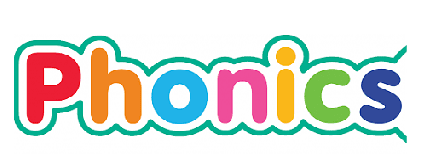What is Phonics?
Phonics is a way of teaching children how to read and write. It helps children to hear, identify and use different sounds that distinguish one word from another in the English language.

Phonics is a way of teaching children how to read and write. It helps children to hear, identify and use different sounds that distinguish one word from another in the English language.
Word-reading is one of the essential dimensions of reading; the other is comprehension. Skilled word-reading involves working out the pronunciation of unfamiliar printed words (decoding) and recognising familiar printed words. Underpinning both of these is the understanding that letters represent the sounds in spoken words. Fluent decoding supports pupils’ comprehension, because they don’t have to devote mental energy to individual words. A good grasp of phonics is also important for spelling, contributing to fluency and confidence in writing. (DfE 2012)
Phonics is the method of teaching reading and writing by correlating sounds with letters or groups of letters. There are 44 sounds in the English language which we put together to form words. Some sounds are represented by one letter like the ‘t’ in tin, whilst other sounds are represented by two or more letters like ‘ck’ in duck.
Children are taught the sounds, how to match them to letters and finally how to use the letter sounds for reading and spelling.
At The Pochin School, we follow the Read Write Inc Phonics and reading scheme. Each week the children learn three new sounds and then they spend two days reviewing these sounds and embedding them in reading and the spelling of words.
The children are assessed approximately every 6 weeks and then group across class 1 and 2 so that the children learn the appropriate speed sounds to make progress and then read story books at the correct level. We ensure that children read texts that are 100% decodable and therefore only meet sounds that they know and can therefore experience success and the pleasure of reading.
Materials to support at home:
Read Write Inc Handwriting Rhymes And Characters
Red Words By Band Bookmarks (1)
It would also be useful for your children to learn to read and write the year 1 and 2 common exception words as appropriate.
Into the pot: Model the phrase ‘into the pot goes’ while placing objects that rhyme into a pot/bowl (for example, a bat, a hat, a cat, a mat). Ask your child to repeat with you. Do this lots of times and then see if they can do it independently. You can then vary this; choose objects so that they have to decide which will not go in the pot e.g. a cat, a rat, a hat, a bird.
Use this Phonics information booklet at home to test your child’s reading of sounds, real words and alien words.
Every year, in June, the Government publish a National Phonics assessment which takes place. The assessment involves reading a total of 40 words, a combination of real and alien words. Please use the link below to practise this with your child.
https://www.gov.uk/government/publications/phonics-screening-check-2018-materials
Blending – To draw individual sounds together to pronounce a word, e.g. /sh/i/p/ blended together reads ship.
Segmenting– Splitting up a word into its individual phonemes in order to spell it., i.e. the word pat has 3 phonemes: /p/a/t/.
Phoneme– The smallest single identifiable sound, e.g. the letters ch representing one sound.
Grapheme– A letter, or combination of letters, that represent a phoneme.
Digraph – A combination of two letters representing one sound, as in ph and sh.
Trigraph – A group of three letters representing one sound, for example ‘igh’
Pseudo words – Words that are not real. These are sometimes called ‘alien words’ or ‘nonsense words’.